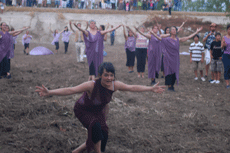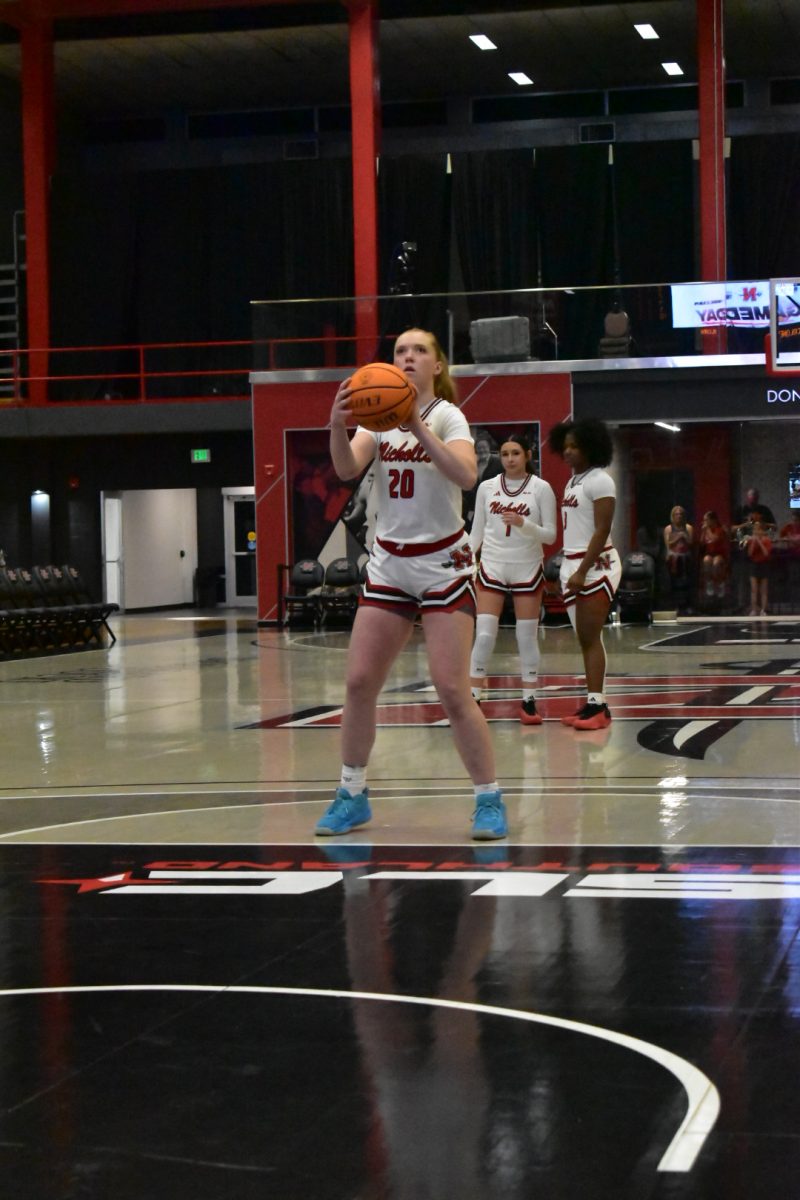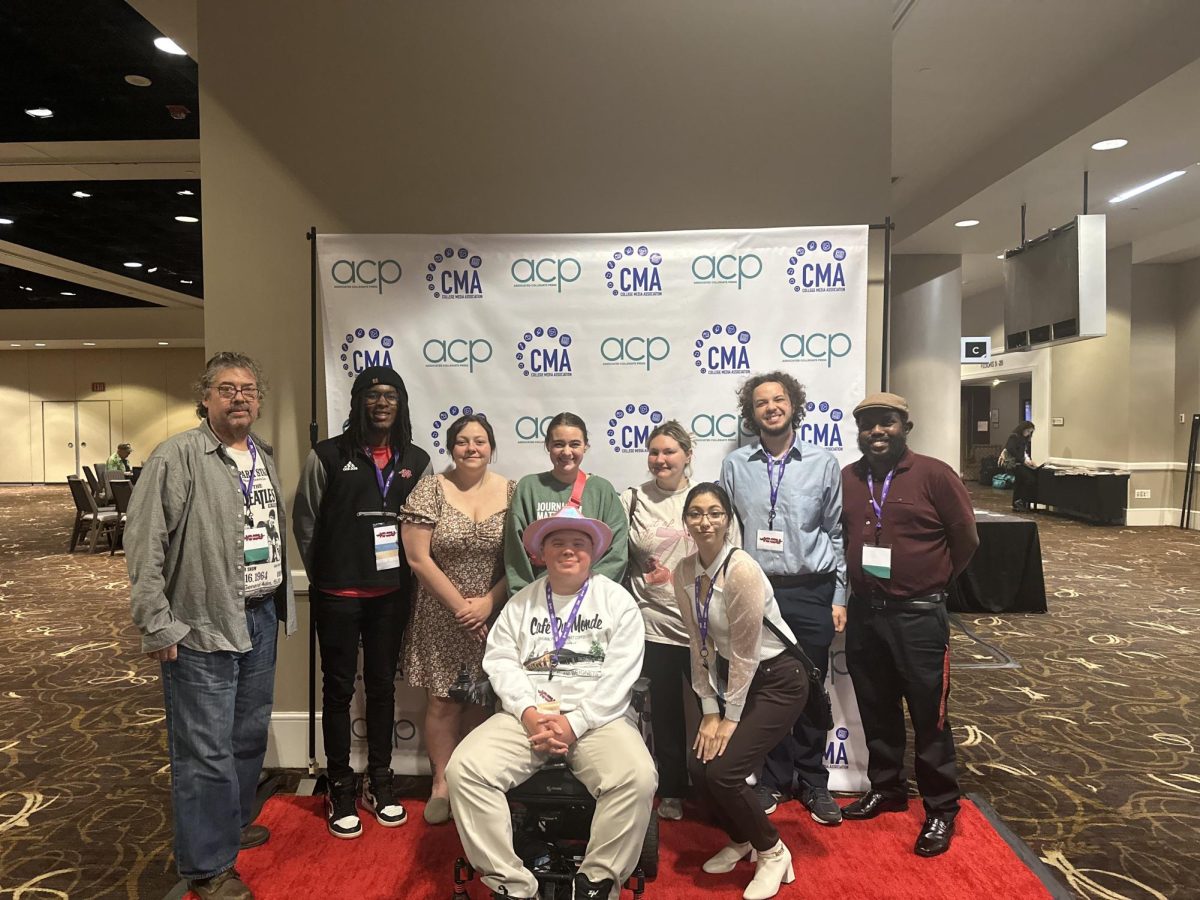In appreciation of its life-giving waters, local performers praised the power of the Mississippi River over the summer as they danced simultaneously with performers from six other locations, starting at Lake Itasca, Minnesota and following the path of the river to their location in Plaquemines Parish. Angela Hammerli, teacher education distinguished service professor, served as the site choreographer for the Plaquemines Parish location. Hammerli, who has a Bachelor of Arts in dance, was approached with the idea of being a part of the “One River Mississippi” production by its artistic director, Marylee Hardenbergh. Hardenbergh, who has been named Artist of the Year twice, has been creating large outdoor artistic spectacles for 25 years, ranging in places such as wastewater treatment plants and a clock tower on the Volga River in Russia. Hammerli and the other site choreographers for the Lake Itasca, Minneapolis, Quad Cities, St. Louis, Memphis and New Orleans areas met with Hardenbergh in Memphis and St. Louis in preparation for the event. She said when they would meet, they would discuss what the water of the Mississippi meant to each of them.
“We would talk about what we give to the river, what it gives to us,” Hammerli said. “Because she (Hardenbergh) trained us so well, we were able to share that connection with our dancers, and we felt connected to each other and the river.”
Besides Hammerli, there were six other dancers from the Houma-Thibodaux area who participated in the event, including Jessica Martin Arceneaux, Jo Broussard, Lauren Cenac, English senior from Houma, Andrea Dupree-Cenac, graduate student from Houma, Kristina Doiron and Heidi Domangue, art senior from Schriever.
There were three aspects included in the dance: the art of dance, the environment and the community. Hammerli said in order to fully incorporate the community aspect of the project, she was asked to not only get dancers from the Houma-Thibodaux area but also to use younger dancers from Plaquemines Parish. Hammerli and her dancers performed the base choreography of the dance while they incorporated the younger dancers within the performance.
The show in Plaquemines Parish was held at Woodland Plantation, the only remaining plantation home in the Delta, on the west bank of the Mississippi. One goal of that performance was to be able to start the dance in the backyard of the plantation house, where boats could be seen from the river but to end it with a clear view of the river, along the levee. This also incorporated another community aspect of the project, Hammerli said, because it required the 400 audience members to actively participate in the performance.
“Dance by itself is nothing unless you have that interaction between the dancer and the audience,” Hammerli said.
The dancers, however, were uncertain at first about how they would be able to get the audience to follow them from the backyard of the plantation house to the levee. This problem was resolved because each site had large circles for the performers to dance with, and by the constant rolling of these objects, the audience followed the dancers down 75 steps to the levee. Upon arriving at the levee, Brenda Dardar Robichaux, the principle chief of the Houmas Nation Indian Tribe, blessed the water while Plaquemines Parish fireboats, which had many spouts flowing out, “danced” in the background.
“Several of us were crying at that point because the audience members walked down with us,” Hammerli said. “The whole time we never knew how the audience would perceive it.”
At each site the dancers performed to music that represented the culture of the area. The dancers in Plaquemines Parish performed to two live songs from Charmaine Neville and a Cajun song.
The last section of each performance was the same throughout the length of the Mississippi River, using thirty seconds from each site’s dance in an eclectic blend. Radio simulcasts linked the performances in real time, and Hammerli said that the connection of everyone doing the same movement at the same time was something she has had the opportunity to feel only a few times in her dance career.
“This is probably why people danced hundreds, thousands of years ago,” Hammerli said. “It brought this connection to life.”
Kristina Doiron, dance major at the University of Louisiana at Lafayette, said that the dance was creative and required improvisations.
“It represented how we felt about the river, how we absorbed its energy and its importance,” Doiron said.
Heidi Domangue, art senior from Schriever, described the dance as being “very free, very loving.” She also said the most beautiful part of the dance was the connection with the other dancers along the Mississippi River.
“I was completely astounded,” Domangue said.
Hammerli recalled how filthy she and her dancers became after the dance.
“I remember hearing one of the dancers say, ‘I have never enjoyed having my legs so muddy before,” she said.








